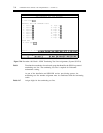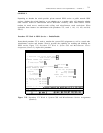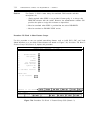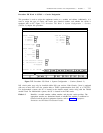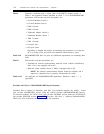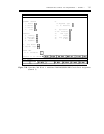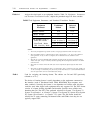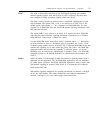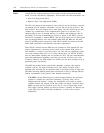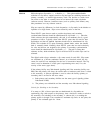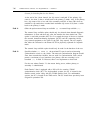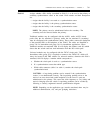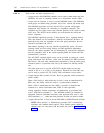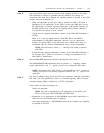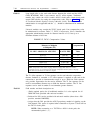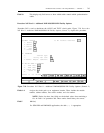
7-58
ADMINISTRATION OPTIONS AND REQUIREMENTS — GENERIC 2
Field 9 Assigns the line coding format that will be used to forcibly ensure that the data
meets T1-carrier ones-density requirement. Field encodes and their descriptions are:
●
●
Zero Code Suppression (ZCS)
Bipolar 8 Zero Code Suppression (B8ZS).
The ZCS line-coding format (restricted) scans each byte for the all-zeroes octet and,
on detecting this bit sequence, substitutes a one for the zero in bit position 2. The
ZCS format is the most common and is used widely. The ZCS format can be used
(without any consideration of the communications protocol) to transmit 7-bit
characters/data at rates up through 56K-bps via modems and multiplexers that do
bit-stuffing. If the data communications protocol is based on the HDLC protocol
and data is transmitted as inverted-HDLC, then the ZCS option can be used for data
rates up through 64K-bps. The data modules (both DCP and BRI) use the DCP
protocol and BRI protocol respectively. Both DCP and BRI are based on the null
based DMI specification, and therefore meet these requirements.
Those DS1/T1 facilities that use RBS and are optioned for ZCS maintain the ones-
density requirement by converting all-zero octets in the transmit PCM stream of
each channel to a string of seven zeros and a one. This does not significantly affect
voice and voiceband data since it is in analog (PCM) form. For DS1/T1 facilities
that use 24th-channel signaling and are optioned for ZCS, the data communications
protocol/communications equipment used must prevent the all-zeroes octet from
occurring; otherwise, the ZCS method will forcibly alter the data (causing errors) to
guarantee proper ones-density.
The B8ZS line-coding format (unrestricted) substitutes a unique code (bipolar
violation code) for any eight consecutive zeros. This bipolar violation code is
detected at the receiving end and converted back to the original string of eight zeros.
The B8ZS encoding method permits data transmission at rates up through 64K-bps
without consideration of the protocol clear channel transmission.
CAUTION: Several different types of network digital facilities may be linked
together to complete the end-to-end connection. Typically, these will be
multiplex-derived facilities. Usually, the multiplexers will contain a bipolar
violation monitor and removal circuit that corrects all bipolar violations (alters
B8ZS type data) and also produces an all ones if a loss of input signal occurs.
This bipolar violation monitor and removal feature is currently an inherent part
of the MX3, M13, MX2, and M1C multiplexers, as well as most vendor’s
multiplexers.



